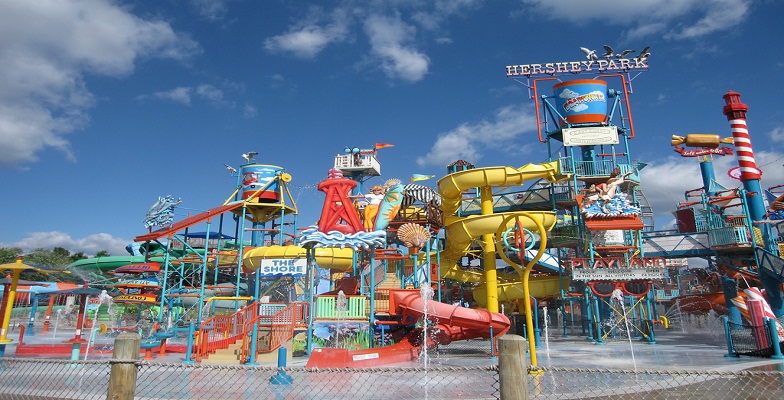

Thunderstorms caused by powerful sea breeze fronts frequently occur in Florida, a peninsula surrounded on both the east and west by the Atlantic Ocean and Gulf of Mexico, respectively. The northern sea breeze meets the southern sea breeze, creating a sharp convergence line in the cumulus field. Sea breeze convergence in Cuba is very similar to that in Florida. At night, the sea breeze usually changes to a land breeze, due to a reversal of the same mechanisms. Its speed depends on whether it is assisted or hampered by the prevailing wind, and the strength of the thermal contrast between land and sea. At the front warm air continues to flow upward and cold air continually moves in to replace it and so the front moves progressively inland. If the flow aloft is aligned with the direction of the sea breeze, places experiencing the sea breeze frontal passage will have benign, or fair, weather for the remainder of the day. When powerful this front creates cumulus clouds, and if the air is humid and unstable, the front can sometimes trigger thunderstorms. The cold air from the sea meets the warmer air from the land and creates a boundary like a shallow cold front. If the air inland is moist, cumulus often marks the front.Ī sea-breeze front is a weather front created by a sea breeze, also known as a convergence zone. Schematic cross section through a sea-breeze front. (For practical reasons, other offshore wind farms are situated further out to sea and rely on prevailing winds rather than sea breezes.) While many onshore wind farms and offshore wind farms do not rely on these winds, a nearshore wind farm is a type of offshore wind farm located on shallow coastal waters to take advantage of both sea and land breezes. Wind farms are often situated near a coast to take advantage of the normal daily fluctuations of wind speed resulting from sea or land breezes. The term offshore wind may refer to any wind over open water. Sea breezes and land breezes are both important factors in coastal regions' prevailing winds. By contrast, a land breeze or offshore breeze is the reverse effect: dry land also cools more quickly than water and, after sunset, a sea breeze dissipates and the wind instead flows from the land towards the sea. Because land heats up much faster than water under solar radiation, a sea breeze is a common occurrence along coasts after sunrise. As such, sea breezes are more localised than prevailing winds. Exploring the shoreline and the coves will deliver some more amazing experiences.A sea breeze or onshore breeze is any wind that blows from a large body of water toward or onto a landmass it develops due to differences in air pressure created by the differing heat capacities of water and dry land. The beauty and allure of the sea is just a few minutes’ drive from home. Staying fit and healthy is easy with numerous hiking trails and nature walks within the surrounding area. Children can burn off their energy at the nearby Keppel Kraken waterpark or the Yeppoon Lagoon, or take advantage of the skate parks, local fishing and boating spots to enjoy new family adventures. Take advantage of the abundance of restaurants and cafes along the Yeppoon foreshore. A major shopping centre offering a diverse range of shopping is also only 5 minutes away, with a choice of grocery shopping and specialty retail stores. There is a calming sea breeze that carries the seagulls through the area and sweeps through the idyllic green surroundings.Ĭommunity is promoted with three parklands within the estate, providing a beautiful communal area to catch up with neighbours and friends.Ī primary school and a childcare centre are within a 5-minute drive.

The estate is situated on a plateau at the foot of gently sloping hills. Yeppoon’s best new residential development, Nautica Breeze, is nestled in a beautiful green corridor on Tanby Road.


 0 kommentar(er)
0 kommentar(er)
